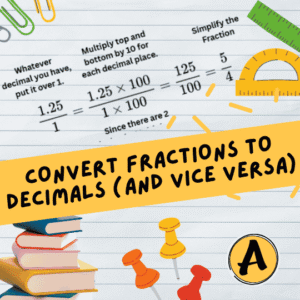What are Simple Linear Equations?
Simple linear equations are equations involving at least one variable, where the highest power of the variable is 1. They represent a straight line when graphed on a coordinate plane. The general form of a simple linear equations is:
ax + b = 0
where:
a and b are constants, and
x is the variable
What are the Basic Rules for Simple Linear Equations with one unknown?
To solve the simple linear equations with one unknown, always move your unknown variable (often represented by x, y, a,b, c, or another letter) to one side of the equation and everything else to the other side.
Remember: Whatever you do to one side of the equation, you must do to the other side.
Inverse Operations
To undo an operation performed on the variable, use its inverse operation:
=>To undo an Addition, Subtract And To undo Subtraction, Add
=>To undo Multiplication, Divide and To undo Division, Multiply
Example to solve Simple Linear Equations with one unknown
Example: 2x+3=0
To undo the 3 on the left-hand side (LHS), we add 3 to both sides:
2x−3+3=−6+3
⇒2x=−3
To isolate the variable, we divide both sides by 2:
2x/2=−3/2
⇒x=−3/2
Simple Linear Equations Easy Practice Test
Simple Linear Equations Medium Level Practice Test
Simple Linear Equations Hard Level Practice Test
What kinds of simple linear equations are taught to Year 7 students in the NSW curriculum?
In Year 7, NSW students start learning how to solve basic simple linear equations with one unknown variable. They learn:
Use basic algebra (like writing and reading equations)
Solve equations such as x+4=10; 3x/2 + 4 = 20; 2x=122 etc
Use opposite operations (like subtracting or dividing) to find the value of the variable
Check their answers by substituting values back into the equation
These skills help students understand how numbers and variables work together and prepare them for more advanced math in later years
What are the real-life applications of Simple linear equations with one unknown?
Real-World Uses of Simple Linear Equations (with One Unknown)
Simple linear equations help us solve numerous everyday problems by finding a single missing value, such as cost, time, or quantity.
Shopping & Budgeting 🛒
Example: If Parker wants to buy 3 pens that cost $2 each, and he has $20. How much money is left after he buys the pen?
Equation: 3*2 + x = 20
Solving for x (the number of pens):
6 + x= 20 → x=$14
Parker has $ 14 left with him.
Travel & Distance 🚶♀️
Example: You walk at a speed of 8 km/h. How long will it take to walk 24 km?
Equation: 8x=24
Solving for x (the time in hours):
x=24/8→x=3
It will take 3 hours.
Saving Money 💰
Example: You save $10 each week. How many weeks will it take to save $100?
Equation: 10x=100
Solving for x (the number of weeks):
10x=100→x=10
It will take 10 weeks.
Phone/Data Plans 📱
Example: A mobile plan charges $10 per GB of data. If your bill was $50, how much data did you use?
Equation: 10x=50
Solving for x (the amount of data in GB):
10x=50→x=5
You used 5 GB of data.










